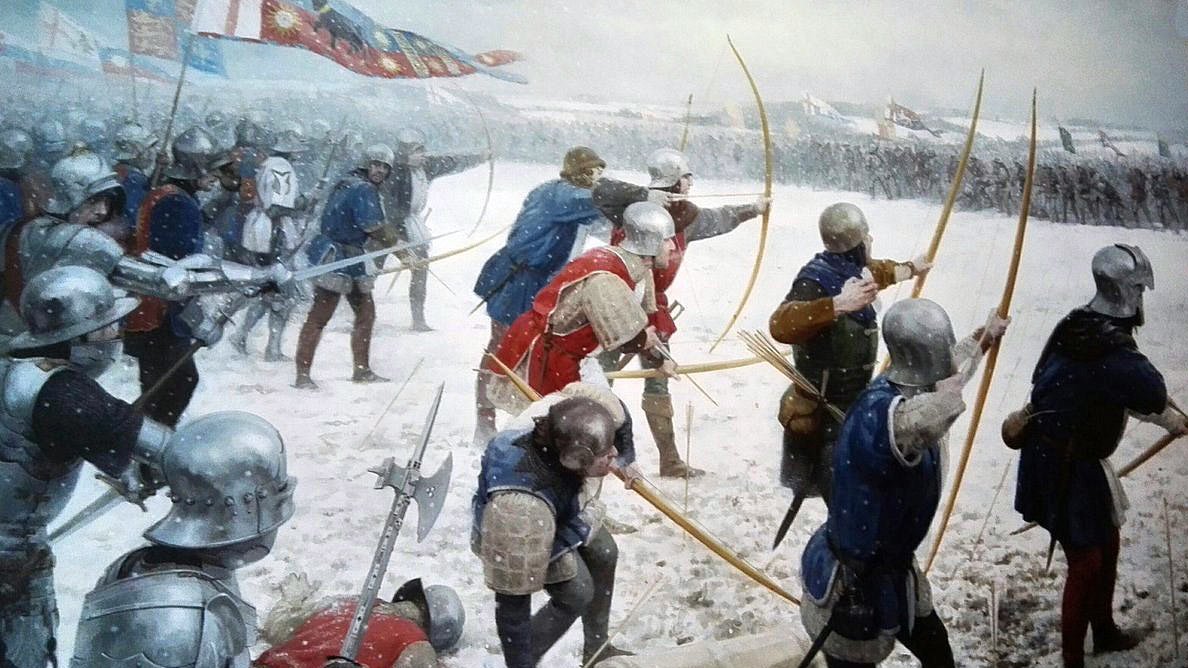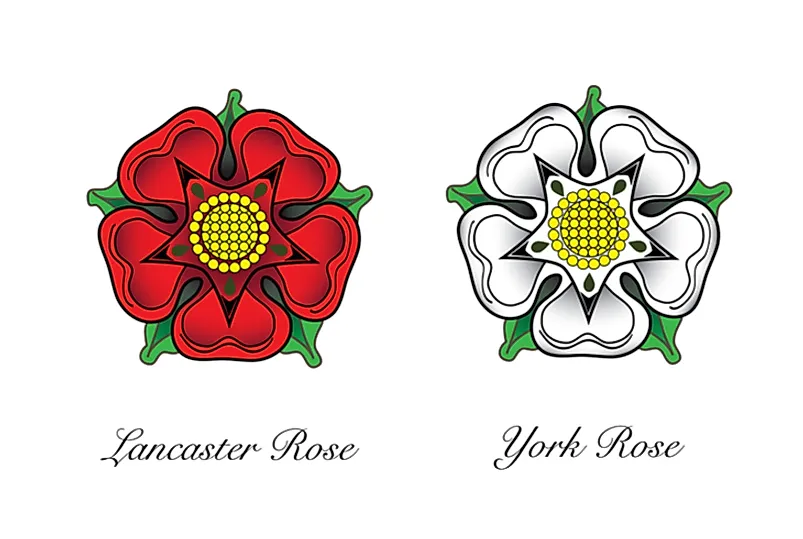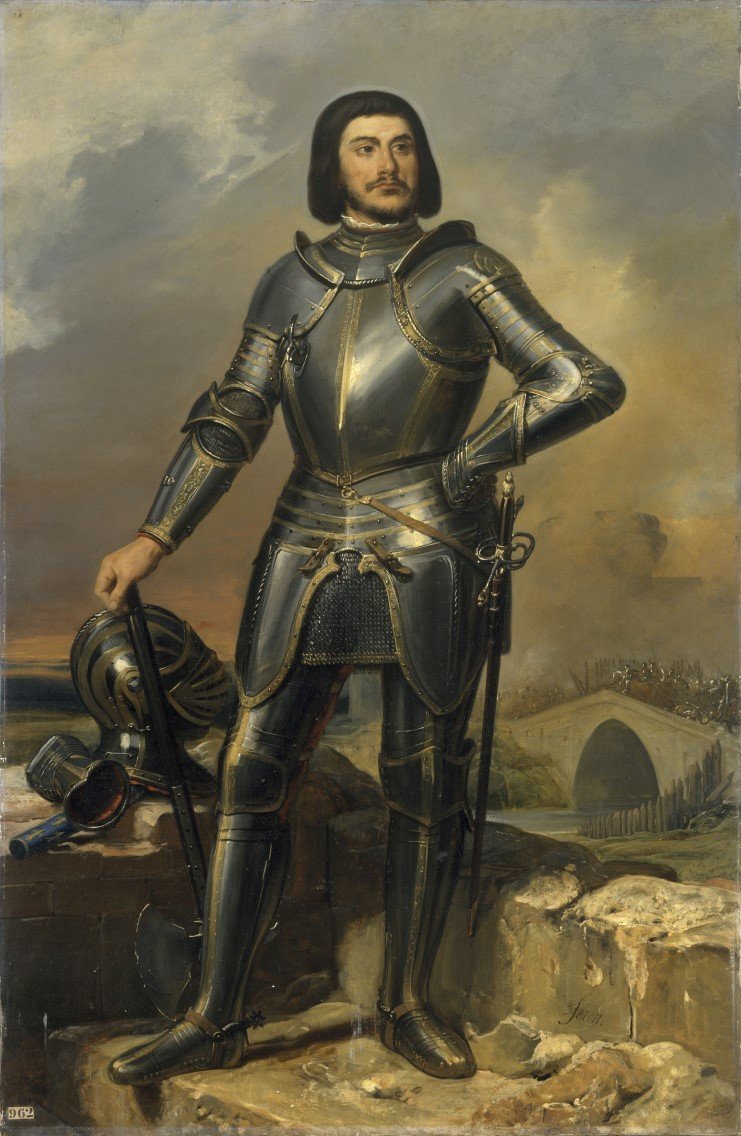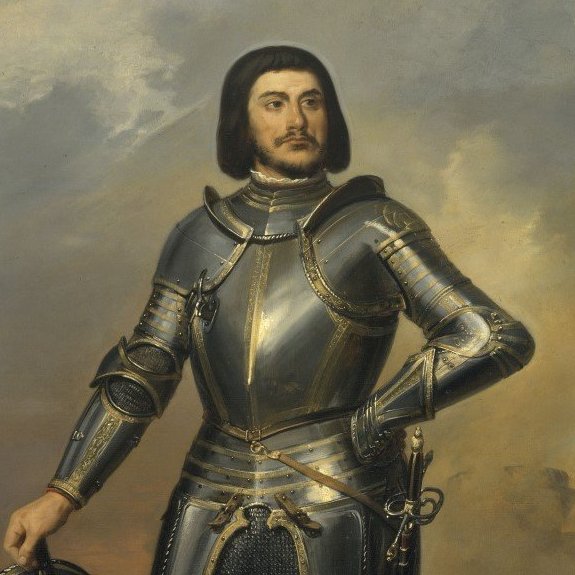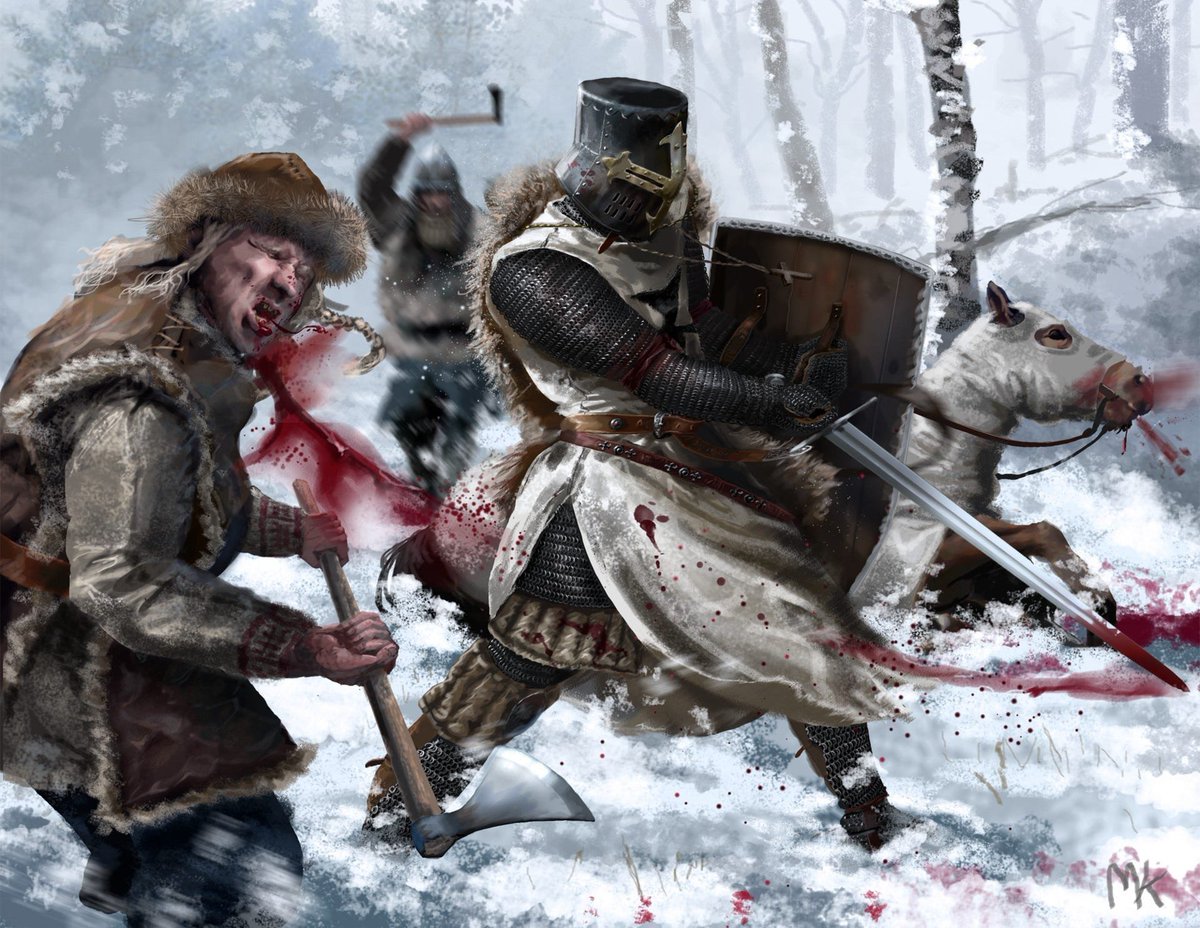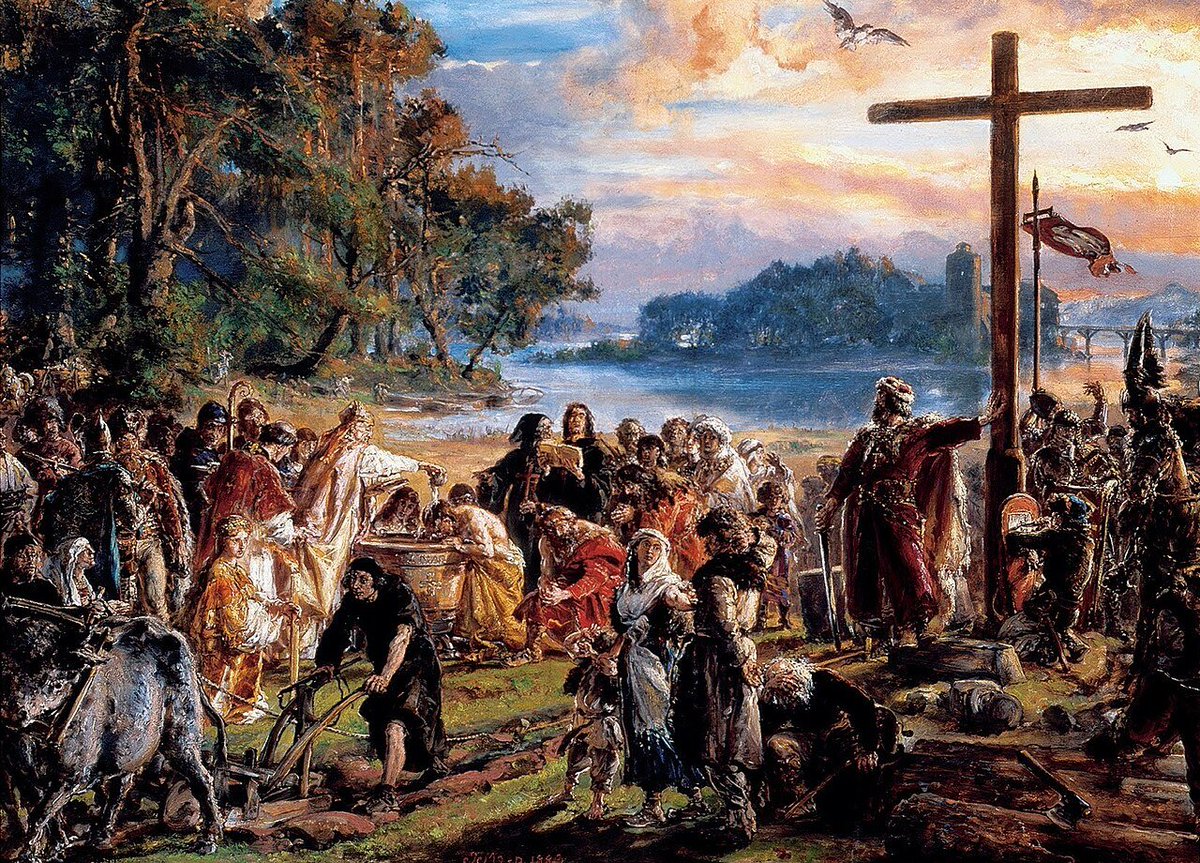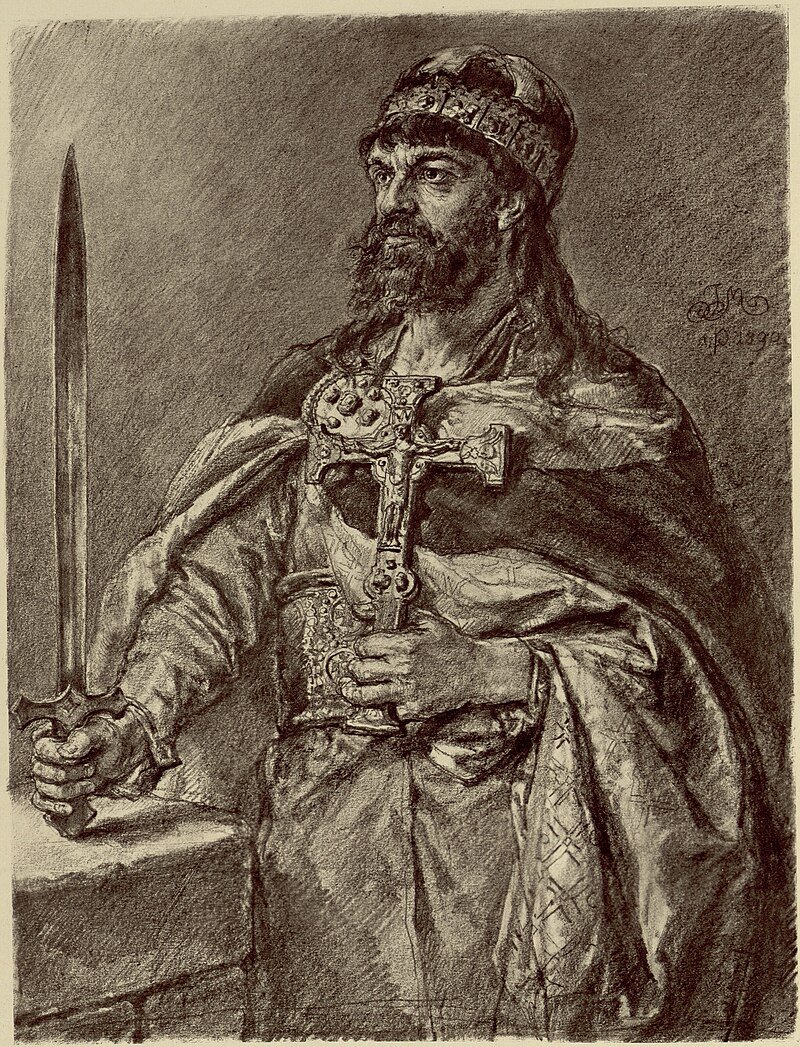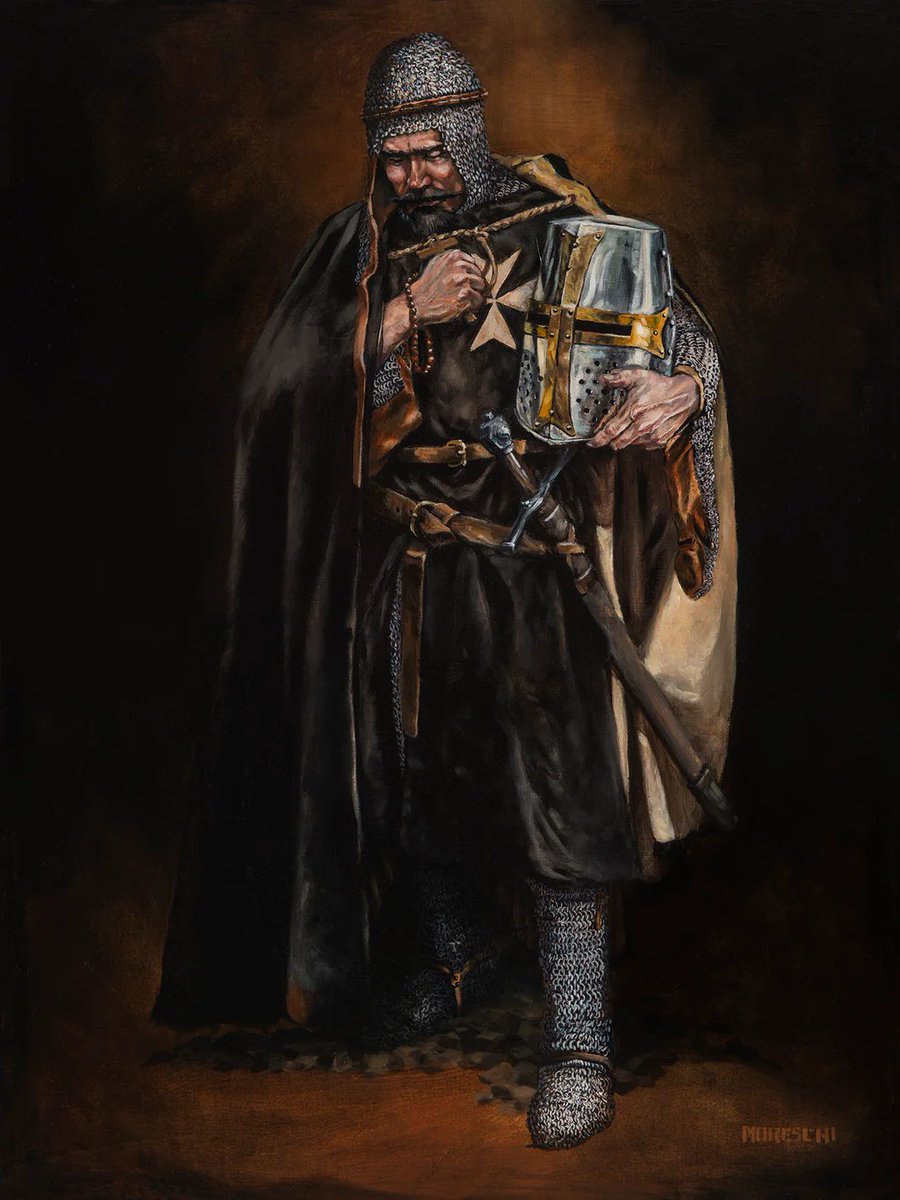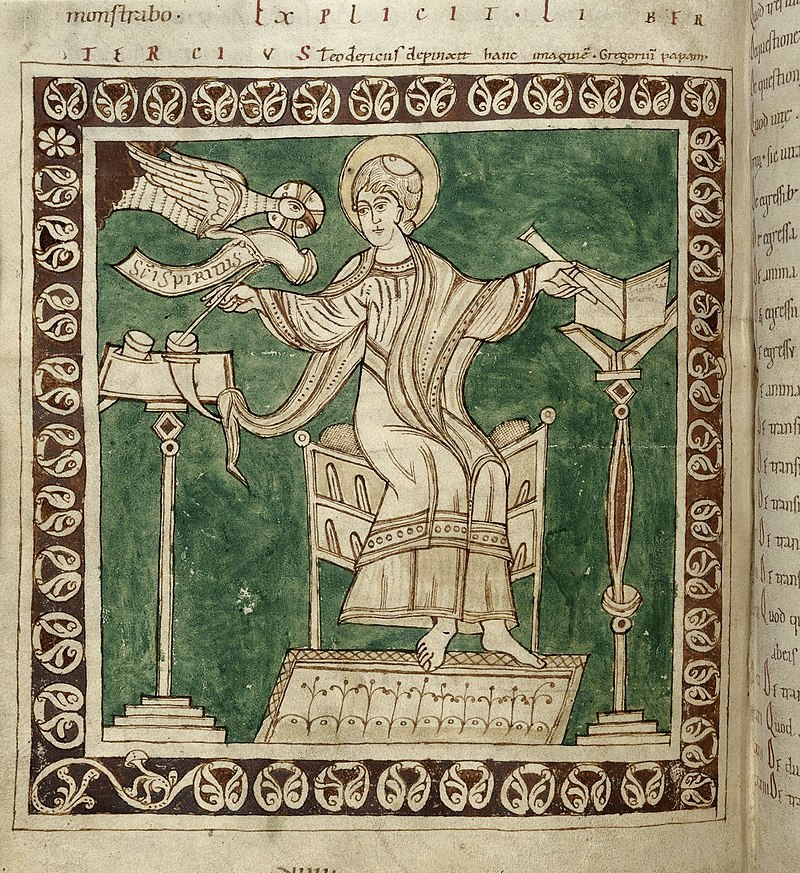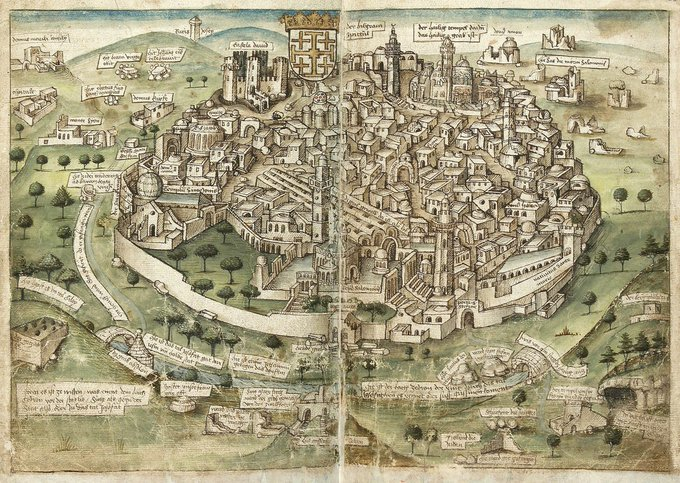The greatest knight who ever lived.
William Marshal was an Anglo-Norman knight, a man of honor and integrity. A man who served five kings, fought in the crusades, became a Templar and was an undefeated tournament champion.
This is his story, a thread. 🧵
William Marshal was an Anglo-Norman knight, a man of honor and integrity. A man who served five kings, fought in the crusades, became a Templar and was an undefeated tournament champion.
This is his story, a thread. 🧵
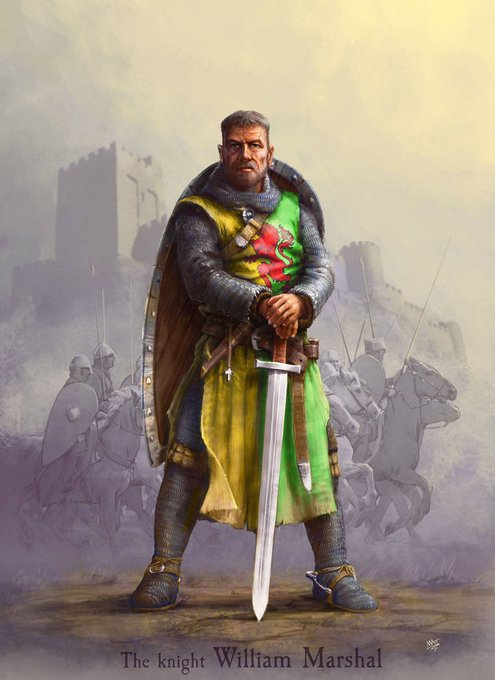
William Marshal was born in either 1146 or 1147 to his father John Marshal and mother Sybilla of Salisbury. He was a member of the noble Marshal family. 
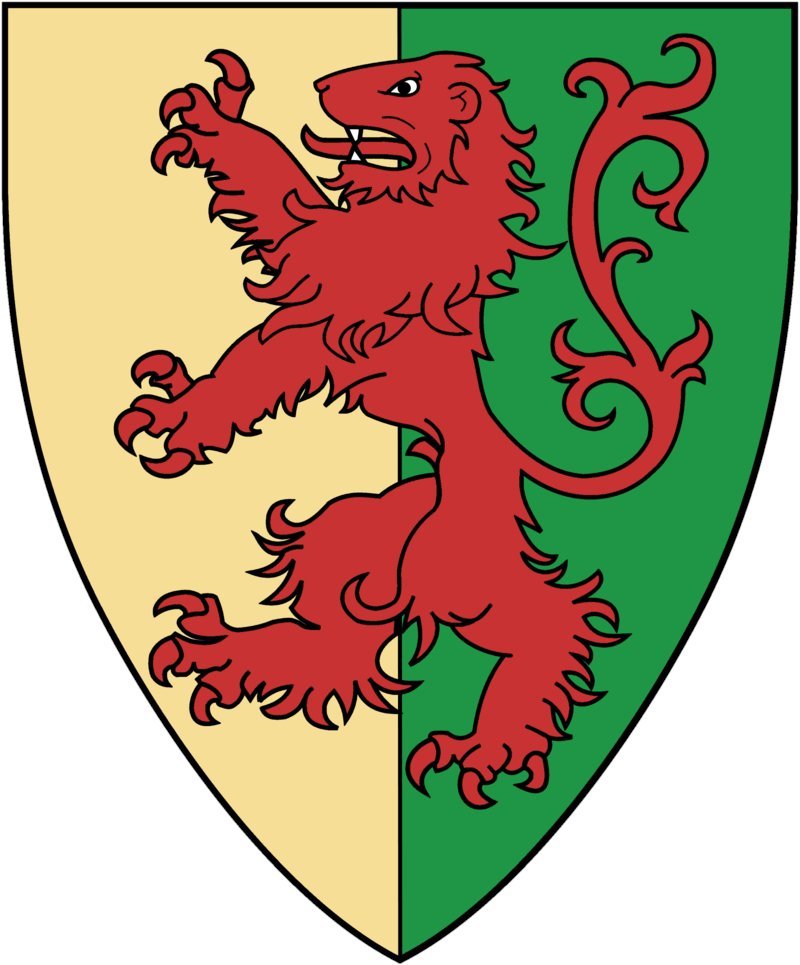
In 1135, William's father supported King Stephen when he took the throne. John Marshal switched allegiances to Empress Matilda in 1139.
King Stephen took young William as a hostage to ensure John's surrender.

King Stephen took young William as a hostage to ensure John's surrender.


Upon seeing his son taken hostage by King Stephen. John Marshal replied "I still have the hammer and the anvil with which to forge still more and better sons!"
Originally planning to launch William at the castle, Stephen could not bring himself to do it and spared him.
Originally planning to launch William at the castle, Stephen could not bring himself to do it and spared him.

William's father was only a minor nobleman. He had no lands or fortune he would inherit.
Therefore he had to find his path. At the age of twelve William was sent to Château de Tancarville in Normandy under William de Tancarville.
Here he would begin training as a knight.
Therefore he had to find his path. At the age of twelve William was sent to Château de Tancarville in Normandy under William de Tancarville.
Here he would begin training as a knight.

William was taught biblical stories, latin prayers and read French romance literature all to instill precepts of chivalry into young William.
William was knighted in 1166 during a campaign in Normandy while being invaded by Flanders.
William was knighted in 1166 during a campaign in Normandy while being invaded by Flanders.

His first taste of battle was described in L'Histoire saying he acquitted himself well to all who witnessed him.
English historian David Crouch said:
"War in the twelfth century was not fought wholly for honour. Profit was there to be made... In this regard Marshal was not so successful, as he was unable to translate his combat victories into profit from either ransom or seized booty."
English historian David Crouch said:
"War in the twelfth century was not fought wholly for honour. Profit was there to be made... In this regard Marshal was not so successful, as he was unable to translate his combat victories into profit from either ransom or seized booty."

In 1167 he was sponsored by William de Tancarville in his first tournament. He found his calling here at the tournament and developed a prowess that would later make him a tournament champion. 

In 1168 he served his uncle Patrick, Earl of Salisbury. Patrick was escorting Queen Eleanor of Aquitaine where William was a part of the escort.
They were ambushed by Guy de Lusignan who attempted to capture Eleanor. She escaped unharmed but Patrick was killed in battle.
They were ambushed by Guy de Lusignan who attempted to capture Eleanor. She escaped unharmed but Patrick was killed in battle.

During this battle, William sustained a wound in his thigh and was captured by Guy and his men for ransom.
William was still young, and someone at Guy's castle pitied him and dressed his wounds as well as gave him a loaf of bread.
William was still young, and someone at Guy's castle pitied him and dressed his wounds as well as gave him a loaf of bread.

Eventually, William was ransomed by Eleanor of Aquitaine who said she was impressed by his bravery.
William served Queen Eleanor for two years and took part in tournaments which further increased his reputation as a knight of honor and chivalry.
William served Queen Eleanor for two years and took part in tournaments which further increased his reputation as a knight of honor and chivalry.

William was appointed as the tutor-in-arms to Young King Henry in 1170 by King Henry II.
In 1173-1174 Young Henry led a revolt against his father. Little is known of William's deeds during this time but it is stated he was greatly loyal to Young Henry.
In 1173-1174 Young Henry led a revolt against his father. Little is known of William's deeds during this time but it is stated he was greatly loyal to Young Henry.

The rebellion failed, Young Henry, William and his retinue travelled for 18 months with Henry II before being permitted to go across Europe to fight in tournaments.
Both Henry and William won tournaments from 1176 to 1182. On his deathbed, William recalled besting 500 knights!
Both Henry and William won tournaments from 1176 to 1182. On his deathbed, William recalled besting 500 knights!

Late 1182 William was accused of having an affair with Margaret of France, Young Henry's wife.
This was almost certainly fabricated by his political enemies but it cannot be proven either way.
William was removed from service to Henry in 1183.
This was almost certainly fabricated by his political enemies but it cannot be proven either way.
William was removed from service to Henry in 1183.

By May of 1183, William was cleared of all charges against the Young King and returned to his service.
In late May, Henry became sick and died on June 11th 1183. On his deathbed King Henry asked William to fulfill a vow Henry made and take up the cross in the crusade.
In late May, Henry became sick and died on June 11th 1183. On his deathbed King Henry asked William to fulfill a vow Henry made and take up the cross in the crusade.

William left for the Holy Land in late 1183. Nothing is known of his time here other than that he did serve and fight in the crusade and that he took an oath to join the Knights Templar on his deathbed. 

After returning in late 1185 William rejoined King Henry II. The king gave William the royal estate of Cartmel in Cumbria.
In 1188 William was summoned by Henry II after an attack by Philip II Augustus. A falling out with his heir Richard made him ally with Philip.
In 1188 William was summoned by Henry II after an attack by Philip II Augustus. A falling out with his heir Richard made him ally with Philip.

In 1189 during a skirmish, William unhorsed Richard. Killing Richard's horse in the process.
William is said to be the only person who has ever unhorsed Richard. William was welcomed into the court of him after Henry's death. Now Richard I, famously Richard the Lionheart.
William is said to be the only person who has ever unhorsed Richard. William was welcomed into the court of him after Henry's death. Now Richard I, famously Richard the Lionheart.

Through King Richard's power, William was married to the 17 year old daughter of Richard de Clare. Her father had been Earl of Pembroke.
This marriage turned the landless knight from a minor family into one of the richest men in England. They had five sons and five daughters.
This marriage turned the landless knight from a minor family into one of the richest men in England. They had five sons and five daughters.

It is notable that there is no evidence that Marshal ever took a mistress which was commonplace and often reported upon.
William took the side of John, Richard's brother but soon discovered his ill intent and rejoined Richard to fight for the loyalists.
William took the side of John, Richard's brother but soon discovered his ill intent and rejoined Richard to fight for the loyalists.

William served Richard honorably and on the king's deathbed he named William as custodian of Rouen. He was also named the royal treasure during the interregnum. 

William was loyal to King John when he took the throne in 1199. He heavily engaged in defense of Normandy against Capetian armies.
William was loyal to John until his death. John trusted William on his deathbed to ensure his son Henry took the throne which William made sure.
William was loyal to John until his death. John trusted William on his deathbed to ensure his son Henry took the throne which William made sure.

William championed Magna Carta and later created another the Charter of the Forest, which eventually became the longest existent English statute. 

Loyal to Henry III upon his succession the now 70 year old William led the charge at the battle of Lincoln in 1217 and fought at the head, leading them to victory! 

William Marshal, 1st Earl of Pembroke, died peacefully on May 14th 1219 at Caversham. On his deathbed he was invested into the Knights Templar.
William, now a Templar, was buried at Temple Church in London where his tomb can still be seen and visited today.
William, now a Templar, was buried at Temple Church in London where his tomb can still be seen and visited today.

• • •
Missing some Tweet in this thread? You can try to
force a refresh


